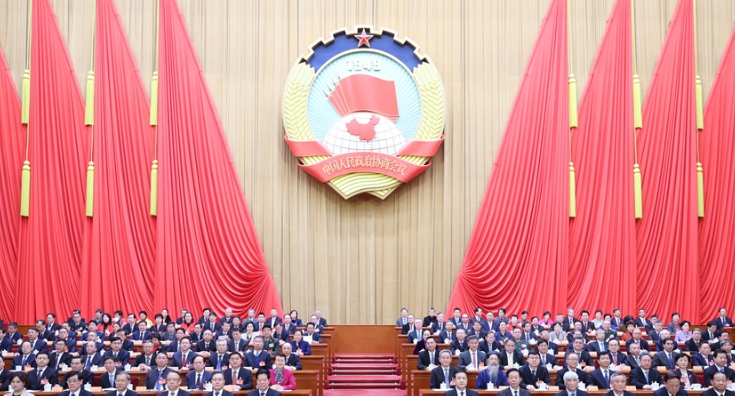
Using Just 10% of Your Brain? Think Again
我们只使用了大脑的10%?
Pop quiz: Which of these statements is false?
突击测试:下面这些表述中哪一个是错的?
1. We use only 10% of our brain.
1. 我们只使用了大脑的10%。
2. Environments rich in stimuli improve the brains of preschool children.
2. 刺激物丰富的环境可以促进学龄前儿童的大脑发育。
3. Individuals learn better when they receive information in their preferred learning style, whether auditory, visual or kinesthetic.
3. 个人以自己喜欢的学习方式接收信息时,学习效果更好,无论他们使用的是听觉、视觉还是动觉。
If you picked the first one, congratulations. The idea that we use only 10% of our brain is patently false. Yet it so permeates popular culture that, among psychologists and neuroscientists, it is known as the '10% myth.' Contrary to popular belief, the entire brain is put to use─unused neurons die and unused circuits atrophy. Reports of neuroimaging research might perpetuate the myth by showing only a small number of areas 'lighting up' in a brain scan, but those are just areas that have more than a base line level of activity; the dark regions aren't dormant or unused.
如果你选择的答案是1,恭喜你答对了。我们只使用了大脑的10%这种想法肯定是错误的。然而这种观点在大众文化中太深入人心了,心理学家和神经学家将其称为“10%误区”。事实与普遍的看法正好相反,我们的整个大脑都派上了用场──未使用的神经元会死去,未使用的神经回路会萎缩。神经影像研究报告可能会让这个谜团永远不得其解,因为在大脑扫描中,只有一小部分区域是“亮部”,但其实那只是活动高于基线水平的区域,阴影部分并未休眠或未被使用。
Did you agree with the other two statements? If so, you fell into our trap. All three statements are false─or at least not substantiated by scientific evidence. Unfortunately, if you got any of them wrong, you're hardly alone.
另两个表述你赞同吗?如果赞同,那你就落入我们的圈套了。三个表述全都是错的──至少没有科学证据支持。不幸的是,不管你赞同哪个错误的表述,与你犯同样错误的都是大有人在。
These 'neuromyths,' along with others, were presented to 242 primary and secondary school teachers in the Netherlands and the U.K. as part of a study by Sanne Dekker and colleagues at VU University Amsterdam and Bristol University, and just published in the journal Frontiers in Psychology. They found that 47% of the teachers believed the 10% myth. Even more, 76%, believed that enriching children's environments will strengthen their brains.
内•德克尔(Sanne Dekker)和他在阿姆斯特丹自由大学(VU University Amsterdam)及英国布里斯托大学(Bristol University)的同事开展了一项研究,研究结果刚刚发表在《心理学前沿》(Frontiers in Psychology)杂志上。作为研究工作的一部分,他们将这三道“神经科学谜题”与其它问题一道拿给荷兰和英国的242名中小学教师进行测试。他们发现,47%的老师相信那个10%误区,甚至更多的老师(76%)相信丰富孩子们身处的环境可以强化他们的大脑。
This belief might have emerged from evidence that rats raised in cages with amenities like exercise wheels, tunnels and other rats showed better cognitive abilities and improvements in brain structure compared with rats that grew up isolated in bare cages. But such experiments show only that a truly impoverished and unnatural environment leads to poorer developmental outcomes than a more natural environment with opportunities to play and interact. It follows that growing up locked in a closet or otherwise cut off from human contact will impair a child's brain development. It does not follow that 'enriching' a child's environment beyond what is already typical─for example, by constant exposure to 'Baby Einstein'-type videos─will boost cognitive development.
这种看法可能源自于下面的证据:关在有运动跑轮、隧道等设施的笼子里并有其它同类作伴的老鼠比孤零零关在空空荡荡的笼子里成长起来的老鼠表现出更强的认知能力和更优的大脑结构。但是这种实验只能证明,确实缺乏刺激物和不自然的环境比有机会玩耍和互动的更自然的环境更容易造成不良的发育后果。由此可以得出结论:将人锁在小屋子里或以其它方式切断人际交往会妨碍儿童的大脑发育。但却不能由此推断:在儿童所处的已经很典型的环境之外继续对环境加以丰富──比如,不停在孩子面前播放“幼儿爱因斯坦”之类的视频──会促进认知能力的发展。
The myth about learning styles was the most popular: 94% of the teachers believed that students perform better when lessons are delivered in their preferred learning style. Indeed, students do have preferences about how they learn; the problem is that these preferences have little to do with how effectively they learn.
学习方式问题的错误之见是最普遍的:94%的老师认为,当课程以学生喜爱的学习方式传授时,学生表现会更好一些。事实上,学生的确有自己偏好的学习方式。问题是这些偏好与他们的学习效果并没有多大关系。
Cognitive psychologist Daniel Willingham explained this conundrum in his 2009 book 'Why Don't Students Like School?' In the best tests of the learning-styles theory, researchers first ascertain students' preferred styles and then randomly assign them to a form of instruction that either matches their preferences or doesn't. For example, in one study, students were randomly assigned to memorize a set of objects presented either verbally (as names) or visually (as pictures). Overall, visual presentation led to better memory, but there was no relationship between the learners' preferences and the instruction style. A study comparing 'sensing' to 'intuitive' learners among medical residents being taught new procedures reached a similar conclusion.
认知心理学家丹尼尔•威林厄姆(Daniel Willingham)在他2009年的《学生缘何不喜欢学校》(Why Don't Students Like School?)一书里解答了这个难题。在学习方式理论方面的一些最佳测试中,研究人员首先查明了学生喜欢的学习方式,然后随机分配他们接受一种或对其胃口或不迎合其喜好的教学形式。比如,在一项研究中,学生们被随机分配去记忆一组物体,这组物体要么是通过口头的方式(以名字的形式)或视觉形象的方式(以图片形式)呈现给学生。总体上看,视觉呈现可以产生更好的记忆效果,但是学习者的偏好与教学方式之间并没有关系。一项在正接受新规程学习的住院医生中对“感知型”学习者和“直觉型”学习者进行比较的研究也得出了类似的结论。
Of course, good teachers sense when students are struggling or progressing, and they adjust accordingly. Students with disabilities have individual needs that should be addressed. But a comprehensive review commissioned by the Association for Psychological Science concluded that there's essentially no evidence that customizing instruction formats to match students' preferred learning styles leads to better achievement. This is a knock not on teachers─we are teachers ourselves─but on human intuition, which finds the claim about learning styles so self-evident that it is hard to see how it could be wrong.
当然,对于正在努力或者正取得进步的学生,优秀的教师是能够感知到的,他们会对教学做出相应的调整。对于学习有障碍的学生,他们的需求应该单独处理。不过一项受托于美国心理科学协会(Association for Psychological Science)所做的全面审查结果显示,没有实质的证据表明为适应学生喜欢的学习方式而制定个性化的教学方式可以让学生取得更好的学习成绩。这不是对老师的一个打击──我们自己就是老师──而是对人类直觉的叫板。我们的直觉认为有关学习方式的主张都是不言自明的,很难看得出它有什么不对的地方。
Our own surveys of the U.S. population have found even more widespread belief in myths about the brain. About two-thirds of the public agreed with the 10% myth. Many also believed that memory works like a video recording or that they can tell when someone is staring at the back of their head.
我们自己在美国人中所做的调查发现,人们对大脑的错误认识甚至更加普遍。2/3的公众都赞同那个10%误区。很多人还认为记忆的工作原理与录制视频相仿,还有人相信当有人在盯着自己的后脑勺时,他们能够感觉得到。
Ironically, in the Dekker group's study, the teachers who knew the most about neuroscience also believed in the most myths. Apparently, teachers who are (admirably) enthusiastic about expanding their knowledge of the mind and brain have trouble separating fact from fiction as they learn. Neuromyths have so much intuitive appeal, and they spread so rapidly in fields like business and self-help, that eradicating them from popular consciousness might be a Sisyphean task. But reducing their influence in the classroom would be a good start.
具有讽刺意味的是,在德克尔团队的研究中,那些对神经科学了解最多的老师对大多数的错误看法同样持相信的态度。显然,(以令人钦佩的精神)积极扩展自己在大脑和思维方面的知识的老师们在学习的过程中没能把事实跟错误的假想区分开来。有关神经科学的错误之见有很大的直观吸引力,而且在商业和互助团体等领域传播非常之快,要从大众意识中清除这些错误看法也许会成为一件永无止境的任务。不过不妨先从课堂着手减少它们的影响,这会是一个良好的开端。
 WSJ
WSJ
 2012-12-14
2012-12-14
 WSJ
WSJ
 730次
730次


 点赞(0)
点赞(0)

 收藏
收藏

 收藏资讯
收藏资讯

 收藏资讯
收藏资讯

 收藏资讯
收藏资讯

 收藏资讯
收藏资讯